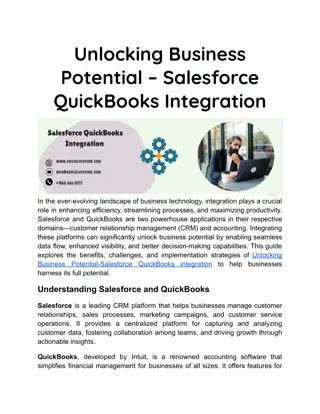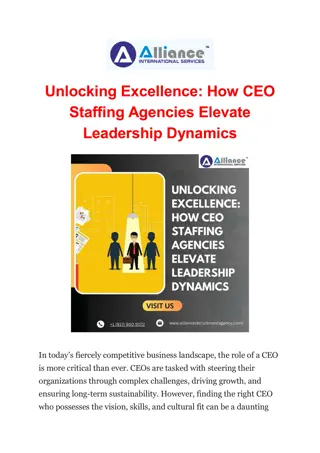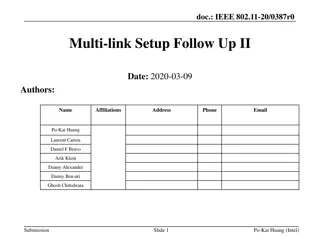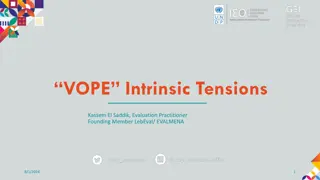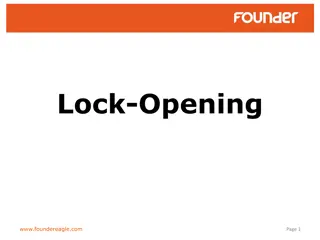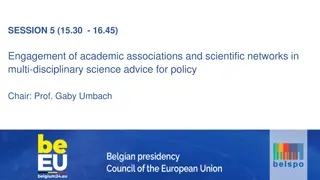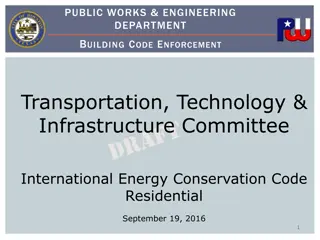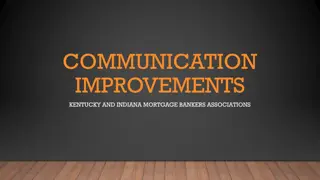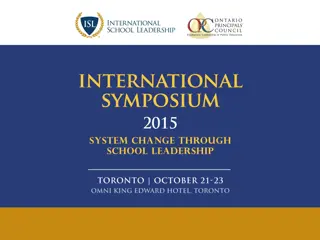Unlocking Success: Remarkable Associations' Key Strategies
Discover the distinctive approaches of remarkable associations in building customer service cultures, aligning with mission and vision, implementing data-driven strategies, fostering dialogue and engagement, and serving as brokers of ideas. These organizations prioritize member needs, constantly innovate, leverage data for growth, promote open communication, and cultivate a culture of idea exchange to drive success.
Download Presentation

Please find below an Image/Link to download the presentation.
The content on the website is provided AS IS for your information and personal use only. It may not be sold, licensed, or shared on other websites without obtaining consent from the author.If you encounter any issues during the download, it is possible that the publisher has removed the file from their server.
You are allowed to download the files provided on this website for personal or commercial use, subject to the condition that they are used lawfully. All files are the property of their respective owners.
The content on the website is provided AS IS for your information and personal use only. It may not be sold, licensed, or shared on other websites without obtaining consent from the author.
E N D
Presentation Transcript
7 Measures of Success: What Remarkable Associations Do That Others Don t
Customer Service Culture "Remarkable associations build their structures, processes, and interactions their entire culture - around assessing and fulfilling members needs and expectations" (page 24) Reach Beyond Customer Satisfaction Experience Perception Inspirational We're here to serve you Who do you serve? Why do you serve them? What need are you filling?
Mission and Vision "Remarkable associations speak passionately about fulfilling their mission and constantly test their ideas for products against that mission, using it as a touchstone for everything they do. . . To find the right mix of products . . . remarkable associations engage in experimentation" (page 28) The goal for an association is to become an indispensible resource for a member. Drive Engagement Vision Reward Relationship Mission is central and the products align.
Data-Driven Strategies "If there is one phrase that sets remarkable associations apart from their counterparts, it's `data, data, data.' They gather information, analyze it, and then use it to become even better" (page 38) Test It Ask questions Test hypothesis Validate results Gather, analyze and use data to drive change.
Dialogue & Engagement "Many with the study group would no doubt echo the employee at the Society for Human Resource Management (SHRM) who said, `We all discuss decisions openly with each other. We have a desire to collaborate with each other, and we do it in mission-driven ways" (page 44) SHRM membership is reported to have grown by from 36,000 in 1992 to over 250,000 today. Must Haves Candor Open feedback Free flow of ideas Business focused, not personal Staff and volunteers engage on association's direction and priorities.
A Broker of Ideas "While Presidents/Chairs may be visionary leaders, what's more important is their ability to facilitate visionary thinking throughout the organization (page 49) We are in a knowledge economy. The organizations and clients that I have seen thrive have a culture of ideas. Ideas are the currency in the organization. Must Dos Foster innovation Generate interest Spark the fire! Facilitates visionary thinking throughout the association.
Organizational Adaptability "Our data confirmed that no organization - regardless of how remarkable it is - can predict change with full accuracy and therefore be on target with its response . . . Our data indicate that remarkable organizations do not panic . . . They maintain a clear understanding of their core purpose" (page 58-59) Remarkably through this recession, we have seen a consistent trend that organizations that stayed in the market and continued to reach out to prospective members came through the past year in good shape. Must Be Steady, Strong, Stoic Nimble, Flexible, Change adept Fearless, Forward-thinking, Faster Be willing to change and NOT to change!
Alliance Building "[Remarkable associations are] secure in who they are and what they bring to the table, these associations communicate clear expectations for each specific partnership and do not hesitate to walk away if a win-win situation does not materialize. But they're also willing to admit what they can't do on their own." Everyone wants to partner with successful organizations. Be sure to look in the mirror before you propose an alliance. Who Are Your ? Partners Cooperatives Affinity Programs Seek complimentary partners and projects.
Equation for Success 1. Purpose 2. Feedback & Analysis 3. Action
Commitment to Purpose A Customer Service Culture Alignment of Products & Services with their Mission Remarkable associations build their structures, processes, and interactions - their entire culture around assessing and fulfilling members' needs and expectations. To find the right mix of products and services that align with their missions, remarkable associations willingly engage in experimentation. They doggedly protect their core purpose and related activities while investigating new initiatives. Examples: Zappos.com Norstrom s Department Stores Apple Computers What's more, they fully expect many of their efforts to fall flat.
Commitment to Analysis & Feedback Data-Driven Strategies Dialogue and Engagement They continually track member needs and issues as well as the wider environment, then collectively analyze the data to reach a shared understanding through asking, "What do we now know? What are we going to do about it?" This is characterized by a close-knit, consistent culture where all association staff and volunteers not only receive the same script, in the form of the same information, but also see the potential to contribute to a blockbuster production. Broker of Ideas These associations then incorporate the findings into their strategic and operational planning. But the data collection doesn't stop there. It continues through another methodical, disciplined cycle of gathering, analyzing, and making changes because of what was learned. To leaders of remarkable associations, what matters is not their vision for the association but rather the members vision. The leaders role rests with gathering consensus around a member generated vision rather than forcing buy in into a personal vision.
Commitment to Action Organizational Adaptability Alliance Building Remarkable associations -in the face of markedly declining membership or program revenue quickly assessed the situation and took immediate action with no excuses. Secure in who they are and what they bring to an alliance, remarkable associations communicate clear expectations for each specific partnership and do not hesitate to walk away if a win-win situation does not materialize - they also are the first to admit that they cannot do everything on their own.
Commonalities 1. Vision (core values, mission, purpose, goals) 2. Markets, Competitors, and the Environment Analysis 3. Solid Organizational Arrangements (structures, policies, systems) 4. Use Technology 5. Business Strategies and Plans 6. Offer Variety of Products and Services 7. Leadership (staff, elected) Balanced and Represents all Constituents 8. Community and Culture Integrated 9. Financial Health is Solid & Transparent 10. Physical Setting and Location Accessible 11. Public Policy Strong, Clear and Reflects Constituents Issues
Myths Here is a list of conventional beliefs NOT supported: 1. The smaller the board, the better - not found to be true, association added members when they expand their board. 2. Board members should be selected via a democratic process. - transparency not democracy was key. 3. The President/Chair should be an association professional and come from outside the organization and its membership. - Only three of the nine remarkable associations followed this tenant. Growth from within fosters consistent leadership. 4. Proactive change is better. - The response to the change from the membership is more important that pro or reactive responses. 5. Reserves should equal 50 percent of annual expenses. - Nonprofit is a tax status NOT a mental state or a business plan!






